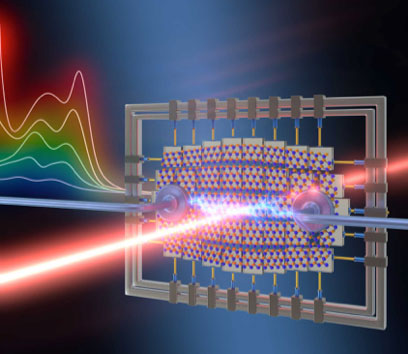Straintronics: Nanotechnology's Path to Revolutionized Electronics
Definition: Straintronics is an innovative field of nanotechnology focused on manipulating the electronic properties of materials through the application of mechanical strain. This technique significantly alters the electrical resistance, magnetic properties, and semiconductor behavior of materials, enabling the development of more efficient, flexible, and miniaturized electronic devices.

The Role of Strain Engineering in Straintronics
Strain engineering is the cornerstone of straintronics, providing the methods and techniques to apply mechanical strain to materials. It involves the deliberate deformation of a material's structure to modify its electronic and physical properties. Strain engineering exploits the relationship between a material's mechanical deformation and its resulting electrical, optical, and magnetic properties. By understanding and controlling this relationship, scientists and engineers can design devices with optimized performance for a variety of applications.
Understanding Straintronics
Straintronics leverages the phenomenon where the physical deformation of a material (strain) leads to changes in its electronic structure. By applying strain, researchers can tailor the material's properties to enhance device performance or enable new functionalities. This control over material properties at the nanoscale opens up a realm of possibilities in electronics and computing.
How Straintronics Works
The application of strain affects the atomic lattice of a material, which in turn modifies its electronic band structure. This manipulation can lead to a change in various physical properties, such as bandgap, carrier mobility, and magnetic anisotropy. Techniques to induce strain include mechanical stretching, bending, or compressing materials, as well as the integration of materials with mismatched lattice constants.
Advantages of Straintronics
- Enhanced Performance: Applying strain can significantly improve the electrical and magnetic properties of materials, leading to higher efficiency and performance of electronic devices.
- Energy Efficiency: Straintronic devices often operate with lower power consumption, contributing to more energy-efficient technology solutions.
- Miniaturization: The ability to control material properties at the nanoscale enables the development of smaller, more compact devices.
- Flexibility: Straintronic principles can be applied to flexible and wearable electronics, paving the way for innovative applications.
Challenges in Straintronics
- Control of Strain: Precisely controlling and maintaining strain at the nanoscale is challenging and requires advanced fabrication techniques.
- Material Durability: Repeated application of strain can lead to material fatigue and degradation over time, impacting the longevity of straintronic devices.
- Integration with Existing Technologies: Merging straintronic components with current electronic systems poses compatibility and fabrication challenges.
Applications of Straintronics
Straintronics has found applications across various fields, including:
- Flexible Electronics: Developing bendable and stretchable electronic displays, sensors, and wearable devices.
- Data Storage: Enhancing the performance of magnetic storage devices through strain-induced modifications in magnetic properties.
- Semiconductor Devices: Improving the performance of transistors and semiconductor lasers through bandgap engineering.
- Energy Harvesting: Utilizing piezoelectric materials in straintronic devices for converting mechanical energy into electrical energy.
Future Perspectives in Straintronics
The field of straintronics is evolving, with ongoing research focused on overcoming current limitations and exploring new materials and mechanisms. The integration of straintronics with other nanotechnologies, such as spintronics and photonics, holds promise for revolutionary advancements in computing, data storage, and energy-efficient electronics.
Further Reading
npj Quantum Materials, Straintronics with van der Waals materials
